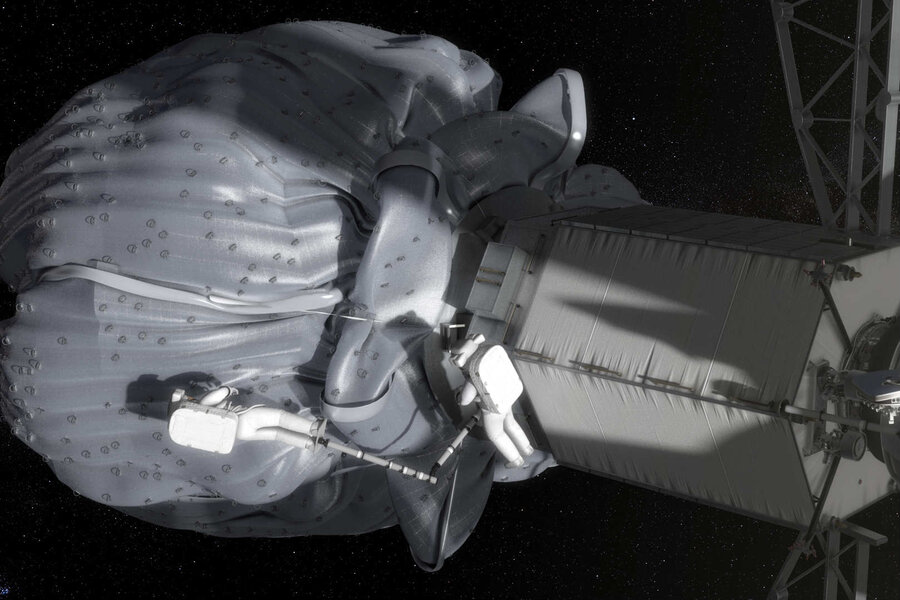In new concept video, NASA bags an asteroid to theme music
Loading...
NASA has released a new concept video that animates its ambitious plan, called the Asteroid Retrieval Mission, to snag an asteroid and then send a manned spacecraft to sample it, all between the years 2018 and 2021.
The new video’s theme music is as dramatic as the political debate over NASA’s future that the mission has furnished, dividing congress along partisan lines over just how much the government is willing to spend on a plan that NASA Administrator Charles Bolden has called one to “protect our home planet” and that Republican congressman Steven Palazzo has deemed a “costly and complex distraction.”
NASA’s new video shows the final bookend of its proposed mission, beginning with the launch of a manned Orion capsule toward an asteroid that a robotic capture vehicle has already bagged up out in space.
In the video, Orion hurtles through a space landscape stylized in celestial blues and purples in a trip that takes just nine days, thanks to a quick tour around the moon and a little help from its gravity. Once at the asteroid, Orion attaches to the robotic capture vehicle so that the team can exit the craft to sample and photograph the snagged asteroid, wrapped up in white material, like a bubble-wrapped gift. It takes ten more days for Orion to return to Earth, parachuting into the ocean.
In the video, the plan is neat and simple, going off without a hitch. But in Congress, there have been quite a few hitches.
In July, the House’s Science, Space and Technology committee voted 22 Republicans to 17 Democrats to bar NASA from going ahead with its asteroid mission, pegging the agency’s plan as vague, romantic, and overall lacking merit.
“While the committee supports the Administration’s efforts to study Near Earth Objects, this proposal lacks in details, a justification or support from the NASA own advisory bodies,” said Steven Palazzo, Chair of the Space Subcommittee (R-MS), in a statement from his office. “Because the mission appears to be a costly and complex distraction, this bill prohibits NASA from doing any work on the project and we will work with appropriators to ensure the agency complies with this directive.”
Instead, the House bill makes a visit to the moon, not an asteroid, a pit stop in a goal that has bipartisan support: ferrying humans to Mars. The bill also scales down NASA’s budget, offering just $16.8 billion for the fiscal year 2014. The president had asked for $17.7 billion, $100 million of which would go to the asteroid retrieval mission.
Still, the Democratic-controlled Senate has floated a separate bill proposing $18.1 billion in funding for NASA. That bill does not address the asteroid mission, but gives NASA the open language – and the funds – to do what it wishes.
NASA announced its asteroid retrieval mission in April, just a month after a meteor exploded above Siberia, injuring about 1,500 people. NASA’s telescopes had not seen the meteor coming, since the agency’s programs are largely focused on monitoring larger objects, and the event rung like an eerie alarm bell signaling just how vulnerable the planet is to the objects ringing the sun. As of June, NASA had tallied about ten thousand Near Earth Objects – asteroids and comets that come within 28 million miles of Earth’s orbit – though it has said that, at least so far as it knows, none of the objects are on an impact trajectory toward Earth.
NASA is still reviewing the some 400 responses it received to the Asteroid Challenge it issued in June in a call for the public to submit its asteroid-wrangling knowhow and to help NASA out. The agency plants to host a workshop at the Lunar and Planetary Institute in Houston from Sept. 30 to Oct. 2 to discuss those proposals and possibilities for incorporation into its mission design.






